Spacecraft
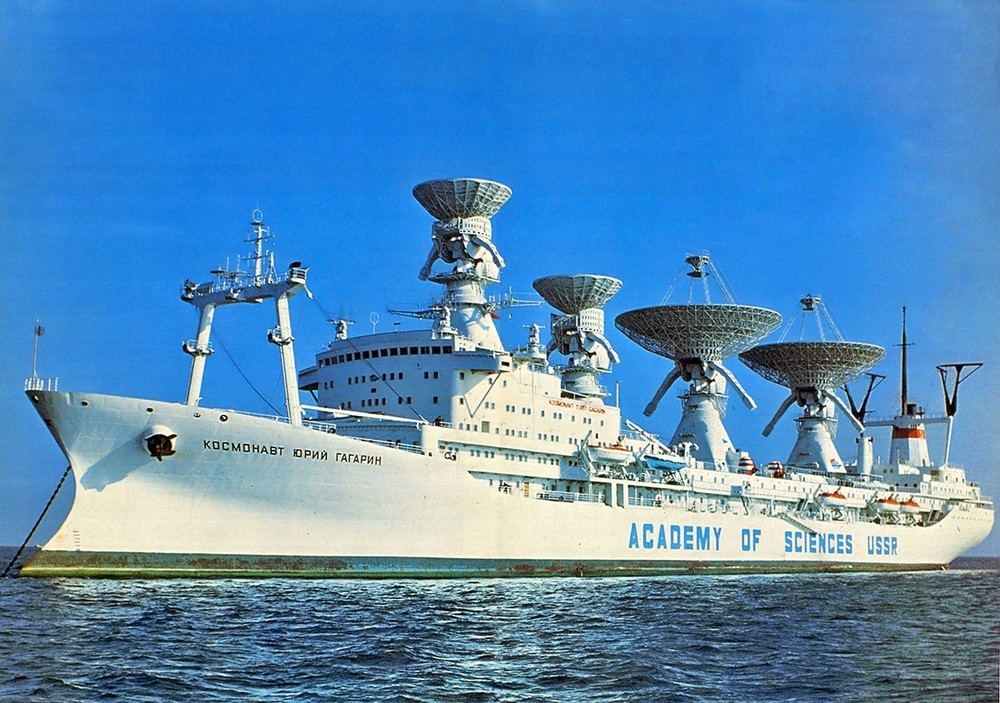
Seeing the title, you might think that it would be a question of spaceships rushing to distant objects of the solar system, but today we will tell about the navy, which has become part of the space program.
The ships of the measuring complex provided flight control of manned spacecraft and orbital stations, communication with crews and satellites, trajectory and telemetry measurements, participated in the testing of ballistic missiles.
')
17 research vessels worked in the Space Research Service of the Department of Marine Expeditionary Works of the USSR Academy of Sciences. The fleet participated in all the most significant events of the space program of the USSR and even partially lived up to our days. Yes, there are almost no such ships left, but the technology of using the ships of the measuring complex is not outdated and remains valid.
Creation of space fleet
By the end of the 1950s on the territory of the USSR, 13 ground-based measurement points were built, which monitored the test launches of intercontinental ballistic missiles and the flights of the first artificial satellites. They could fully control the “main launch” - the launch from the site, but they turned out to be “blind” during the “second launch”, when the booster unit was turned on and the spacecraft was put on a predetermined trajectory.
In addition, it was possible to “see” a spacecraft in orbit only at the moment when it was over the territory of the USSR. The country had neither its own islands, nor leased territories in the other hemisphere, and for monitoring the second launch of interplanetary space stations the North Atlantic zone was considered the only convenient place.
In 1959, Sergei Korolev proposed using ships to communicate with spacecraft and control their flight. In the near future, the first launches to Venus and Mars were to take place, which required developing the design of the ships of the measuring complex (CEC) as soon as possible.
Instead of building a CIC from scratch (they simply wouldn’t have time to build them in time), several dry cargo vessels equipped the telemetry equipment. By May 1959, three ships had acquired an unusual form: an uneven superstructure with three stabilized posts, two powerful U-shaped masts with antennas of radio engineering and telemetry stations.
On time, the conversion was completed. The expedition went "Siberia", "Suchan" and "Sakhalin" - the first ship command and measurement points.

Sakhalin

"Suchan"
In early 1960, in the Pacific Ocean, they took part in the testing of intercontinental ballistic missiles. In 1961, these vessels already served the first space flight around the Earth with a man on board.
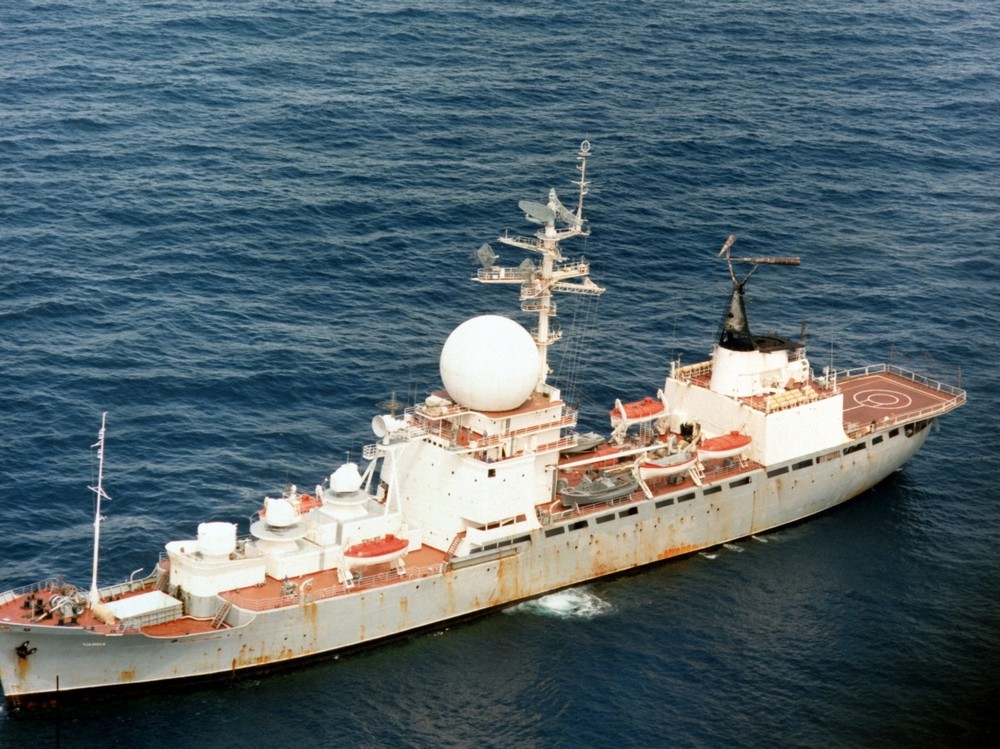
"Chazhma"
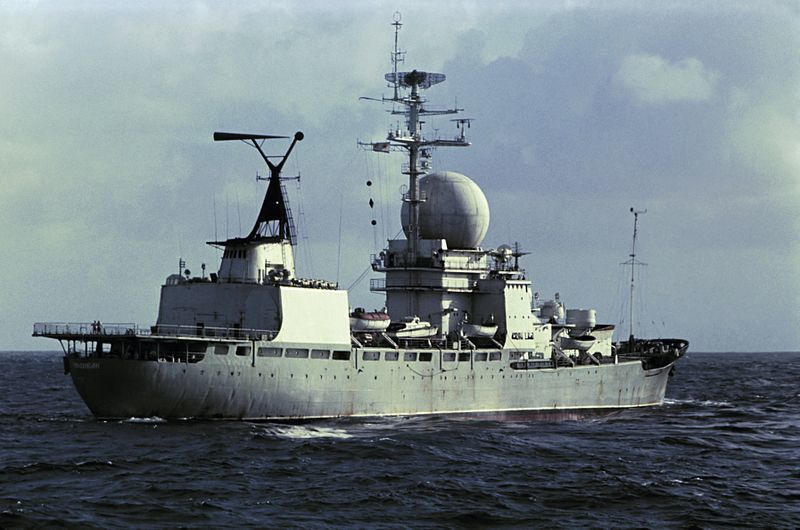
"Chumikan"
In 1963 the fleet was replenished with the ships Chumikan and Chazhma. However, simply re-equip the cargo ship was not enough. The space communications ship could not remain an ordinary ship, albeit a converted one - it had to solve many specific problems. How to place different types of radio-technical stations on the ship so as not to cause mutual interference? Where to find so much energy to power a new technology, which also has special requirements for current parameters? All these issues were resolved with the construction of a new class of ships.
In 1967, the Cosmonaut Vladimir Komarov, Borovichi, Nevel, Kegostrov, Morzhovets were built, and the space fleet itself was transferred to the USSR Academy of Sciences.

"Cosmonaut Vladimir Komarov"
A source
"Cosmonaut Vladimir Komarov" for almost 22 years of operation made 27 expeditionary flights, lasting from one to eleven months, during this time about 700,000 nautical miles were covered, which is about 13 years of "clean" navigation
Then several more ships were built: “Cosmonaut Vladislav Volkov”, “Cosmonaut Georgy Dobrovolsky”, “Cosmonaut Pavel Belyaev”, “Cosmonaut Viktor Patsayev”. In 1979, 11 ships were already part of the maritime space complex. All of them before the collapse of the USSR participated in space programs.
In the 80s new ships entered the flotilla - “Marshal Nedelin” and “Marshal Krylov”.
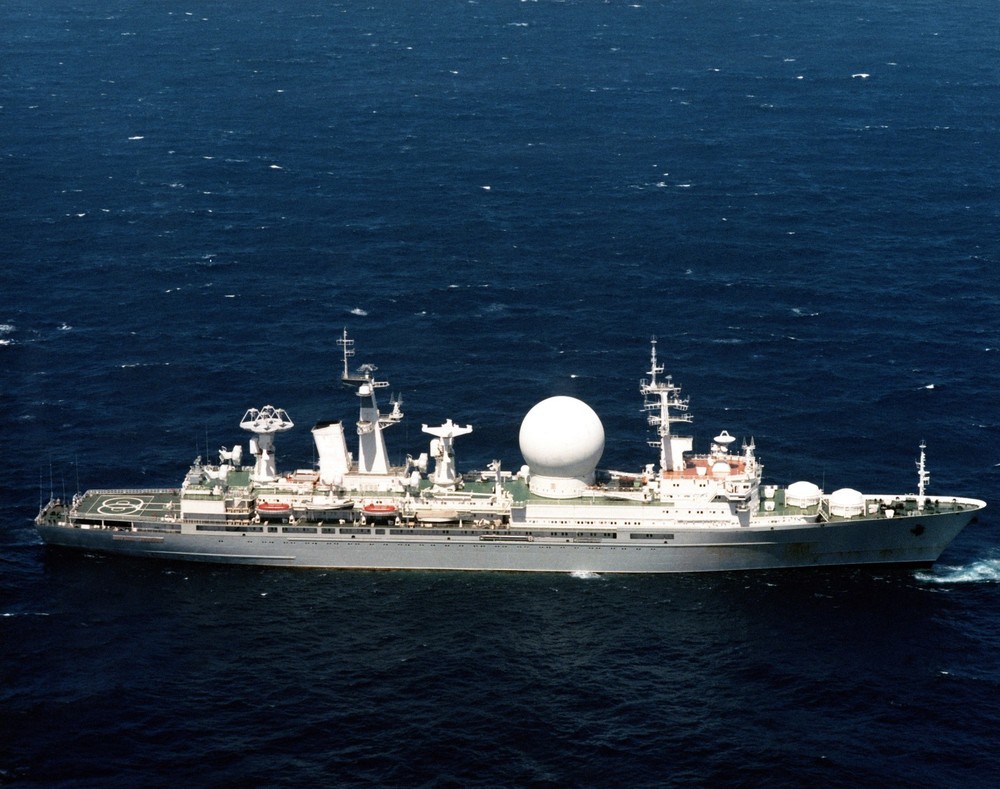
"Marshal Nedelin" in 1985
A source
Another giant is 200 meters in length, the displacement is 24,300 tons, the crew is 396 people. "Marshal Nedelin" examined the landing areas of spacecraft, looking for the head parts for their evacuation or destruction. It could be used for maritime search and rescue.
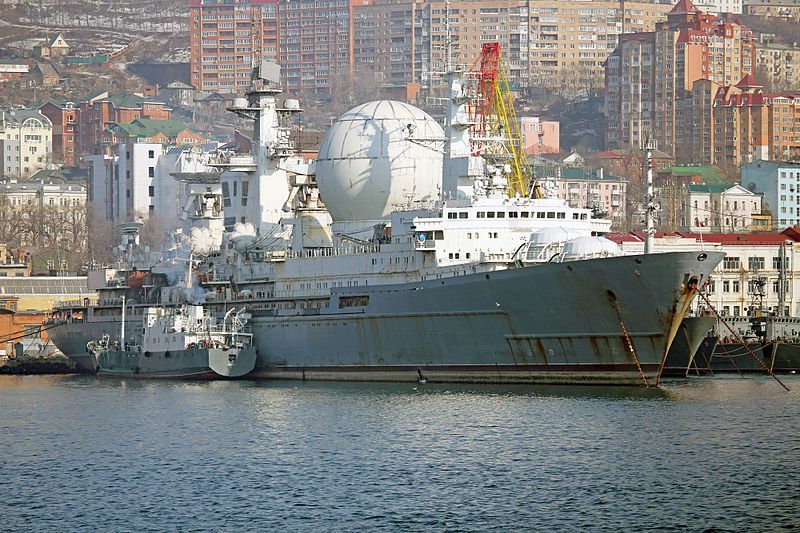
A source
Built in 1987, the Marshal Krylov remains the only active ship of the measuring complex in Russia.
Second stage: flagships
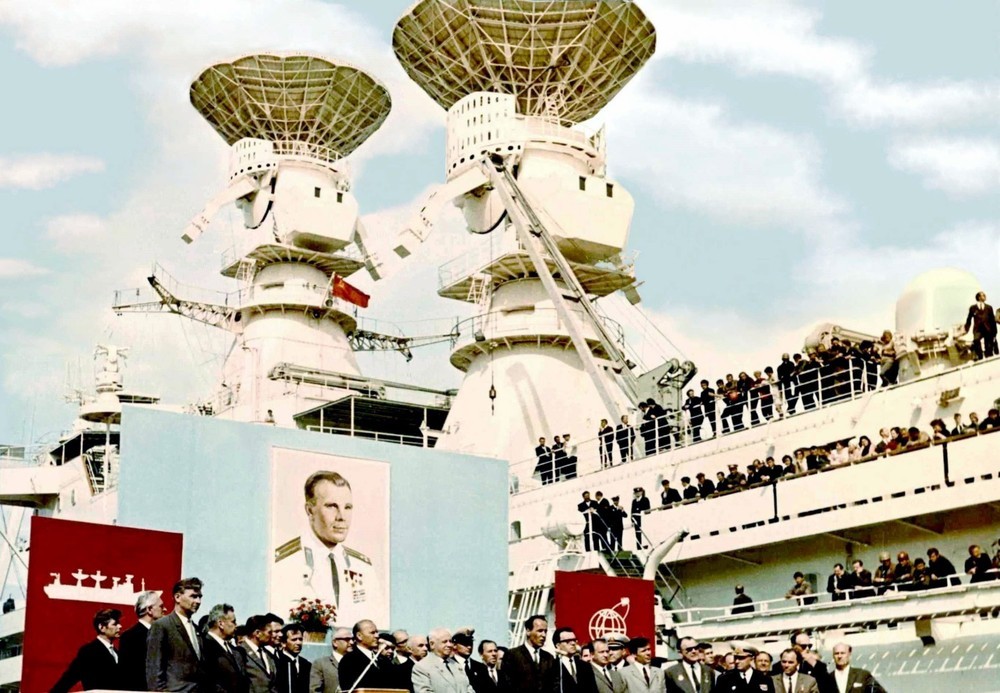
A source
In the late 1960s, the superpowers launched a race for supremacy in disembarking astronauts on the surface of the moon. Research ships were to conduct the entire astronaut flight and control the landing on the moon. To solve this difficult task were fundamentally new unique ships, embodying all the most advanced technologies: "Academician Sergei Korolev" and "Cosmonaut Yuri Gagarin". The ships possessed the highest seaworthiness and could go to any point of the world ocean.
"Academician Sergey Korolev"

180-meter vessel with a displacement of 22 thousand tons and a power plant with a capacity of 12,000 hp For the first time, the entire measuring equipment for this ship was made in a marine version (it was subjected to full protection from moisture).
On the ship "Akademik Sergey Korolev" (ASC) was located equipment that allowed to perform all the functions of ground control points for space flights. At the ASC, for the first time in the world, it was possible to achieve simultaneous two-way communication and control of space objects at a distance of up to 400 thousand kilometers in two frequency bands.
On the ship at the same time more than 300 crew members and a scientific expedition could accommodate comfortably In terms of comfort, the ASC was no different from a large cruise ship, but it was also equipped with various specific equipment. So, on the ship was installed a pulper, which was supposed to destroy the materials of the ship's secret archive in the event of the seizure of the ship.
On the first expedition the ship set off on March 18, 1971, and for the entire period of its service he completed a total of twenty-two expeditions, lasting 6-7 months (sometimes up to ten months).
"Cosmonaut Yuri Gagarin"
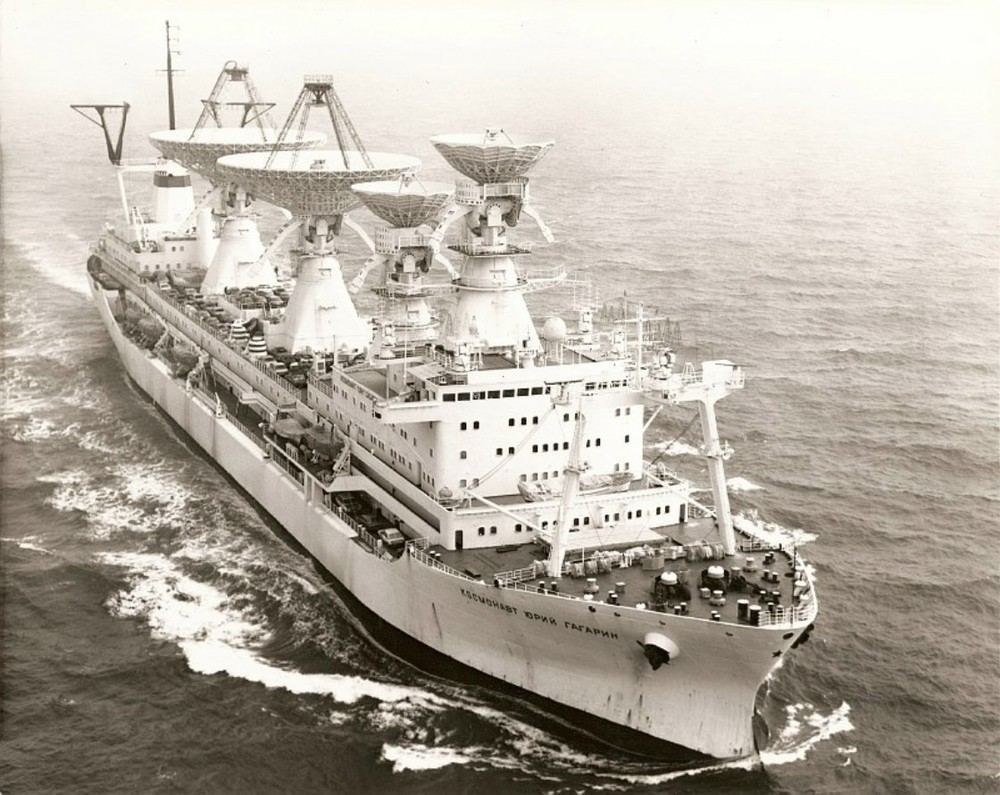
The top of the shipbuilding, the flagship of the space flotilla and the largest for its time (and perhaps at the moment) research vessel, built in 1971 at the shipyards of Leningrad.
Cosmonaut Yuri Gagarin (SGC) contained 1,250 rooms with a total area of 20,000 square meters. meters It is 236 meters long, 64 meters high, and 32 meters wide. In the surviving photographs, the ship rarely appears next to other objects, and it is difficult to estimate its size, but you can compare the figures: the Kug displacement is 45,000 tons; tons.
“Cosmonaut Yuri Gagarin” was equipped with a complex of technical systems, which made it possible to carry out the entire scope of work with any spacecraft available to any stationary scientific-measuring point. In the event of a nuclear attack on the Space Communications Center, the CNG could provide communications and control of the country's space objects.
Such performance indicators were achieved due to powerful transmitting and highly sensitive receiving devices with parametric amplifiers cooled with liquid helium, produced right there on the ship. There were 75 antennas on board. All command-and-control devices were controlled centrally by two powerful computers.
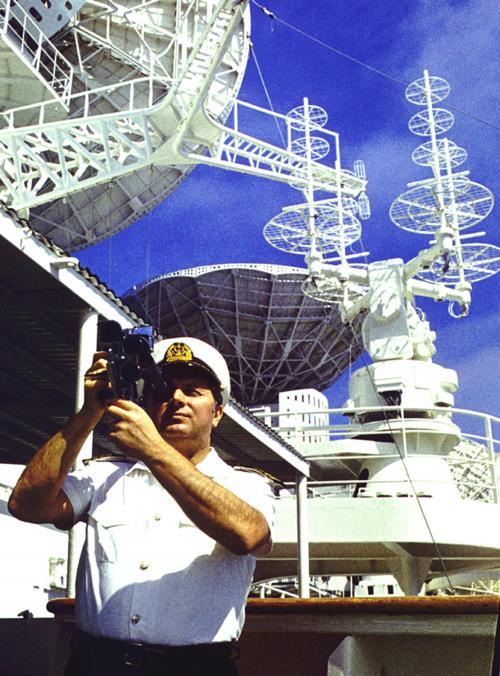
A source
The mirrors of transmit-receive antennas, rotating in three planes, had diameters of 12 and 25 m and weighed 180 and 240 tons, respectively. The total weight of all four main antennas, together with the platform on which they were installed, was 1000 tons.
The KUG could work simultaneously with two space objects - for this, the Foton multifunctional radio engineering complex was used. For communication with Moscow were used satellite transmitters "Lightning".
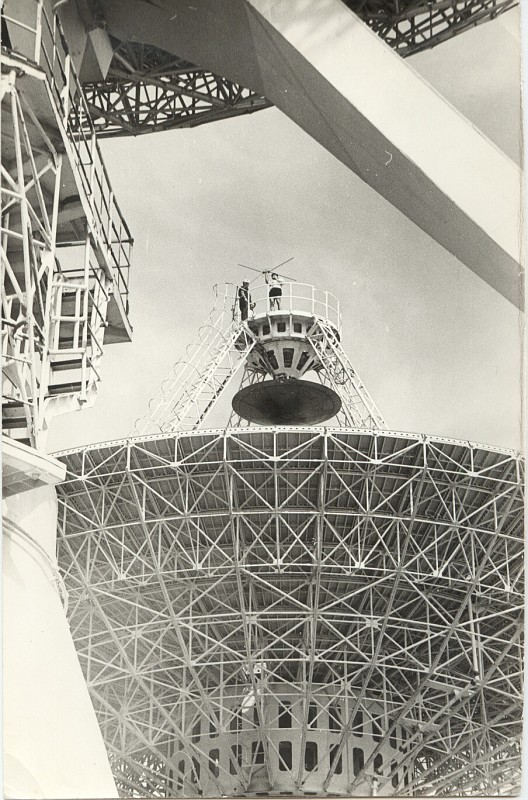
A source
Since the antennas worked very tightly, it was necessary not only to bring the ship to a given point, but also to keep it in place during the roll. The problem with stability arose also because of the antennas themselves, whose diameter ranged from 12 to 25 meters with a total area of 1200 m². If the antennas were placed on the "edge", they turned into a sail.
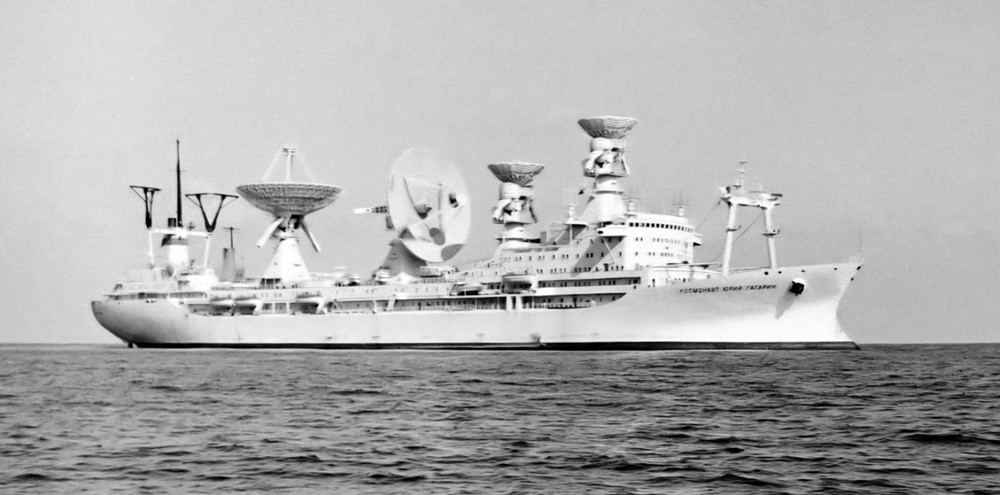
A source
In order to keep the ship in place, a passive damper was installed, with the help of which the amplitude with side rolling in a seven-wave sea state was reduced from 10 to 3 degrees. In addition, thrusters were installed inside the hull - wing thrusters: 2 in the bow and 1 in the stern. They provided the ship with excellent maneuverability. Communication sessions were carried out at wind speeds of up to 20 m / s and waves of the sea up to 7 points.
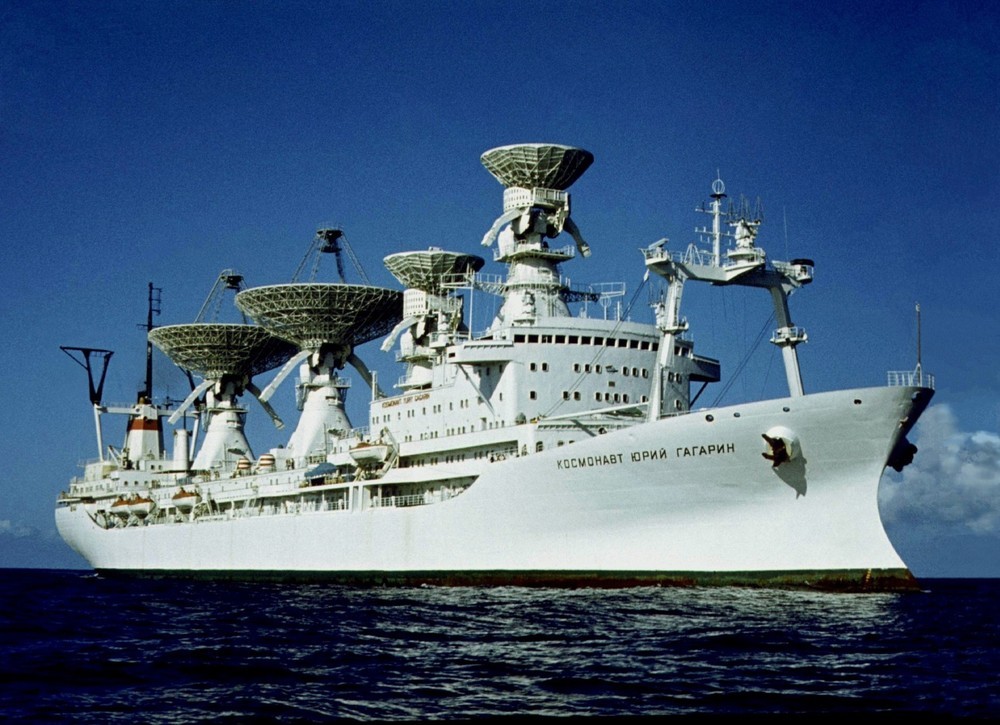
The ship could serve in all areas of the oceans, including the polar, but in practice it was not used in the Arctic Ocean. From 1971 to 1991, the vessel performed 20 expeditionary voyages in the Atlantic Ocean.
Let us touch the inner structure of the ship - it impressed not only with the technical equipment, but also with the conditions for work and rest of the crew and scientific team. All 86 laboratories and 210 cabins had air conditioning systems. On board were a cinema with 250 seats, a gym, three pools, recreation areas with a billiard room. Comfortable conditions were supposed to ensure the work of hundreds of people for 130 days while the ship sailed offline.
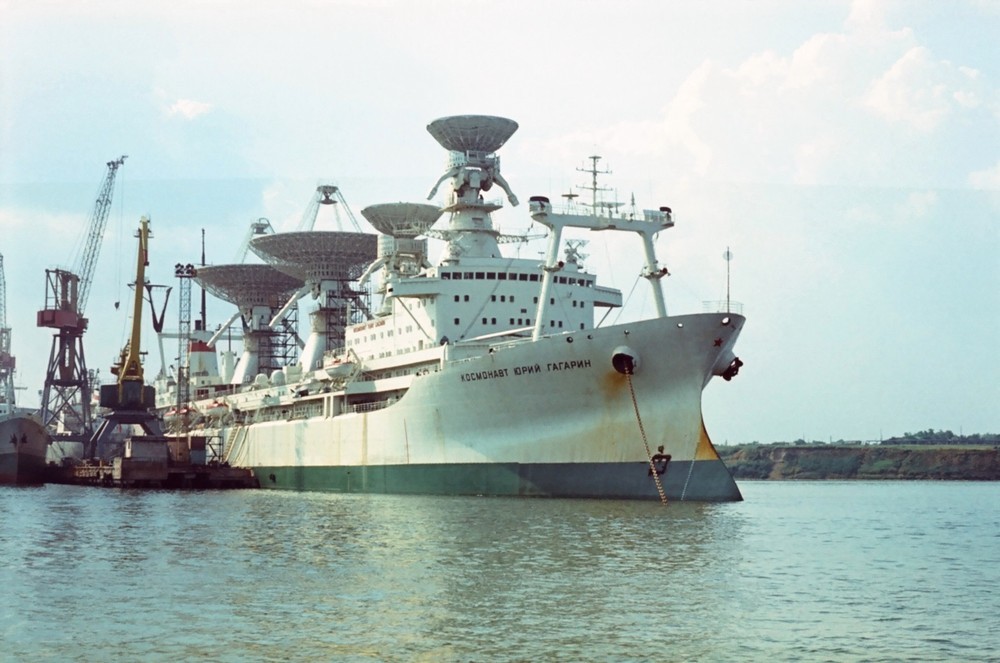
Kug in Dry Liman. Summer 1978
A source
Dead Coast
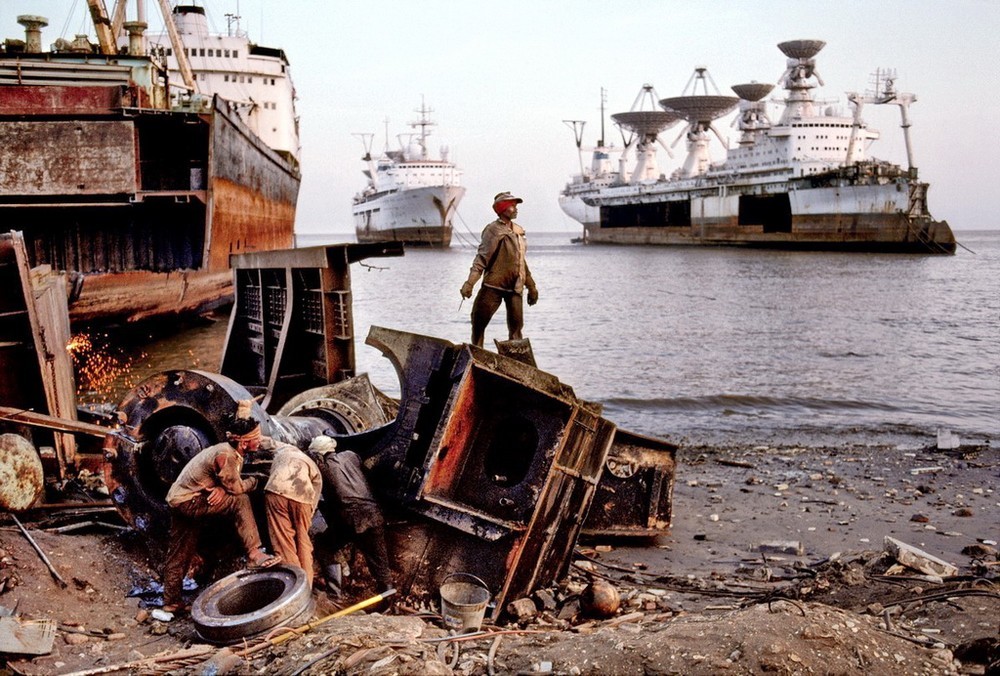
"Cosmonaut Yuri Gagarin" arrived in Alang
In 2016, two ships remained from the entire Soviet space fleet: Marshal Krylov and Cosmonaut Viktor Patsayev.

Since 2001, Cosmonaut Viktor Patsayev has been laid up at the pier of the Museum of the World Ocean in Kaliningrad. To date, he has been working on receiving telemetry information and providing communication with spacecraft, including the ISS. In July 2016, by order of the Minister of Culture of the Russian Federation, the vessel was entered into the unified state register of cultural heritage sites of the peoples of Russia of federal significance.
"Marshal Krylov", having gone through several repairs, is still active today.
What happened to the rest of the ships? Some of them, of course, are outdated - morally and physically. But most died because of the collapse of the USSR. Officially, several ships belonged to the USSR Academy of Sciences, and were serviced in the Black Sea Shipping Company. After the collapse of the Union, organizations remained in different countries.
Since 1991, the Akademik Sergei Korolev stood in the port of Odessa, but Ukraine at that time did not have a space program or money to maintain such a ship. In 1996 it was sold for scrap. The ship "Cosmonaut Yuri Gagarin" suffered the same fate - the last flight was made to the "port" Alang.
The rest of the ships that were on the territory of Russia were waiting for the same fate. Reducing the cost of space led to a sad ending. Attempts were made to save the unique ships, they went on commercial flights, but all attempts were in vain. Since 1991, almost all ships have been periodically destroyed by marauders. Everything that could be sold disappeared from the ships.
The final destination of the space fleet ships is Alang, the so-called “Coast of the Dead”, located 50 km from Bhavnagar, India. Alang is the world's largest site for scrapping ships. Here, on hundreds of cutting platforms, from 20,000 to 40,000 poor work every day. On average, in two months, any ship breaks down completely into scrap metal, and as many as fifteen thousand ships of all classes and types are thrown onto this coast per year to die - and this is not a metaphor, the ships are rushing at full speed.

The space fleet of the USSR died here.
New Hope
Similar research ships are now in the US (the latter is currently commissioned in 2012), China and France.
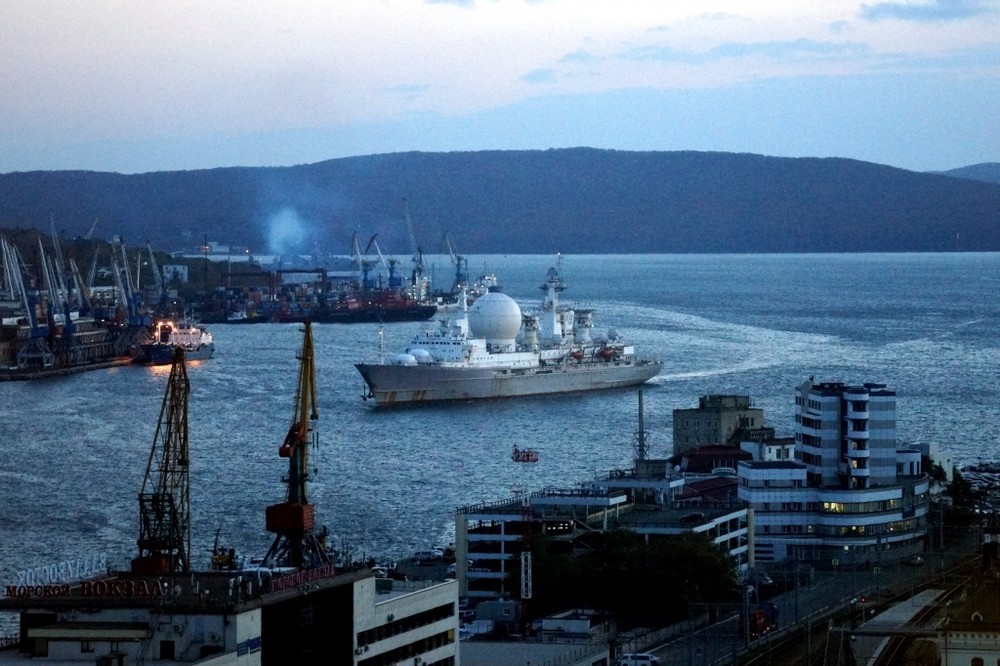
A source
"Marshal Krylov", built in 1987, remains the only fully operational ship of the measuring complex in Russia. The ship performs the tasks of providing flight design tests of new types of rocket and space technology - spacecraft, cruise and ballistic missiles, launch vehicles.
In November last year, it became known that the central design bureau Iceberg was developing a project for a new ship of the measuring complex of the 18290 project. No technical details were reported. It is only known that the work on the project does not stop and continues to this day.
Sources:
R / V “Cosmonaut George Dobrovolsky”
Sea space fleet
What happened to the NIS "Cosmonaut Yuri Gagarin"?
Source: https://habr.com/ru/post/397405/
All Articles